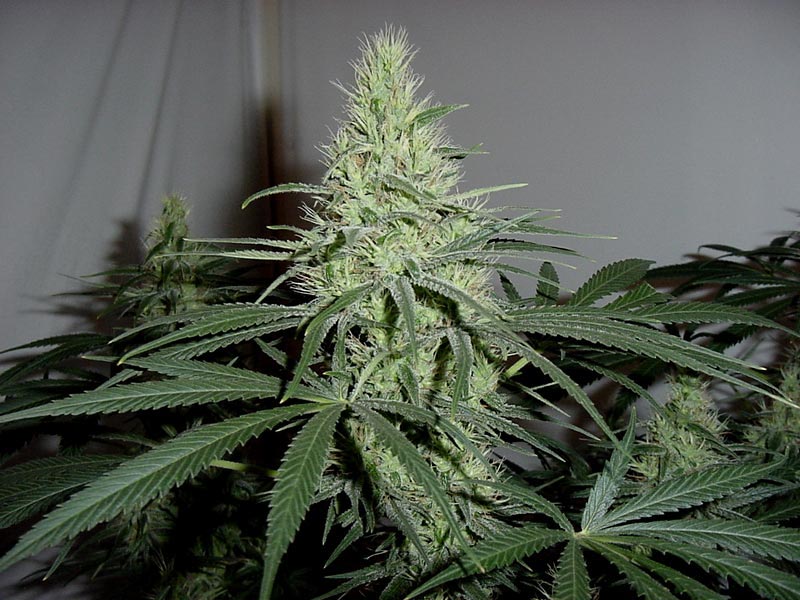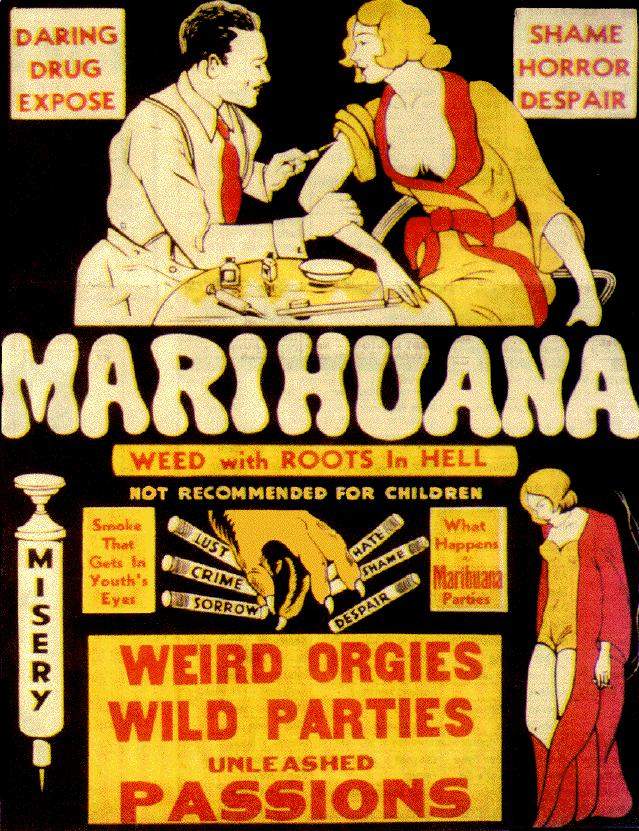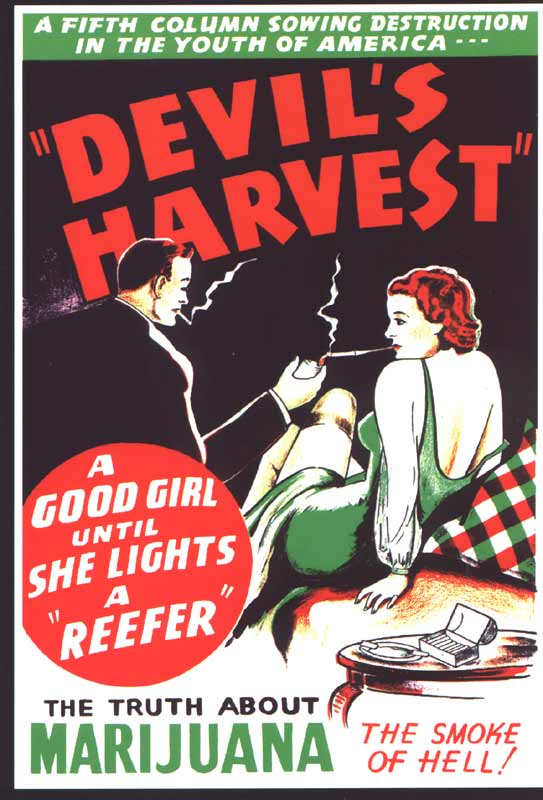After many emails we would like to take the time to make a formal apology for the actions taken here at the bludgeon. We were wrong to criticize and make fun of marijuana and the people who smoke it. We wish our humblest apologies. The writer thought he was being comical. In all actuality the writer was completely uninformed and the article turned out to be not funny at all. Unfortunately the writer wrote about something he has never done or probably even seen. We here at the bludgeon have decided to rectify the actions of that writer. He will be put on suspension until he can write something funny. This basically means that the writer will be on permanent suspension. The writer did not know that such great minds like Albert Einstein have admitted to smoking marijuana, and you certainly not call Einstein lazy. We have decided to give a historical account on marijuana so all the real facts can come out. We here at the bludgeon wish to take all the facts into account and educate our readers on one of the most controversial topics in America today. Once again, our most humble apologies, we will work at getting more comical writers like Tom Splank. Thank you for your continued support and patronage.
-Tom Splank Jr.
The Truth About Marijuana
By: Tom Splank Jr
.

Early History:
The ancestors of Cannabis originated in Asia, possibly on the more gentle slopes of the Himalayas or the Altai Mountains to the north. The exact origin, obscured by Stone Age trails the cross the continent, is not known.
We don't know when Cannabis and humanity first met. Given the growth habit of the plant and the curiosity of humanity, such a meeting was inevitable. In the plant world, Cannabis is a coloniser. It establishes new territory when running water or seed-eating animals carry seed to cleared and fertile soil open to the sun. Fertile soil, clear of competing plants, is rare and short-lived in nature, and is commonly caused by catastrophe such as flood or earthslide. Natural dissemination is slow and the plats tend to grow in thick stands by dropping seed about the spread of their branches.
During the Neolithic era, some 10,000 years ago nomadic groups scavenged, hunted, fished, and gathered plants in an unending search for food. The search ended when they learned to plant the native grains (grasses) and developed agriculture. Agriculture requires a commitment to the land and grants a steady food supply which enables people to form permanent settlements. Cannabis and Neolithic bands probably came in contact often as the plants invaded the fertile clearings - the campsites, roadsides, fields and garbage heaps - that occur wherever people live.
Early History in America:
The hemp industry started in Kentucky in 1775 and in Missouri some 50 years later. By 1860, hemp production in Kentucky alone exceeded 40,000 tons and the industry was second only to cotton in the South. The Civil War disrupted production and the industry never recovered, despite several attempts by the United States Department of Agriculture to stimulate cultivation by importing Chinese and Italian hemp seed to Illinois, Nebraska, and California. Competition from imported jute and "hemp" (Musa textiles) kept domestic production under 10,000 tons per year. In the early 1900s, a last effort by the USDA failed to offset the economic difficulties of a labor shortage and the lack of development of modern machinery for the hemp industry (64). However, it was legal force that would bring an end to US hemp production.
For thousands of years marijuana had been valued and respected for its medicinal and euphoric properties. The Encyclopaedia Brittanica of 1894 estimated that 300 million people, mostly from Eastern countries, were regular marijuana users. Millions more in both the East and the West received prescription marijuana for such wide-ranging ills as hydrophobia and tetanus.
Marijuana was not a legal issue in the United States until the turn of the twentieth century. Few Americans smoked marijuana, and those that did were mostly minority groups. According to author Michael Aldrich, (1) "The illegalization of Cannabis came about because of who was using it" - Mexican laborers, southern blacks, and the newly subjugated Filipinos.
In states where there were large non-white populations, racist politicians created the myths that marijuana caused insanity, lust, violence and crime. One joint and you were addicted, and marijuana led the way to the use of "equivalent drugs" - cocaine, opium and heroin. These myths were promoted by ignorant politicians and journalists, who had neither experience nor knowledge of Cannabis, and grew into an anti-marijuana hysteria by the next generation.
For example, the first states to pass restriction on marijuana use were in the Southwest, where there were large populations of migrant workers from Mexico. One of the first states to act was California, which, "with its huge Chicano population and opium smoking Chinatowns, labeled marijuana 'poison' in 1907, prohibited its possession unless prescribed by a physician in 1915, and included it among hard narcotics, morphine and cocaine in 1929." (1)
In marijuana, the mainstream society found a defenseless scapegoat to cover the ills of poverty, racism, and cultural prejudice. San Franciscans "were frightened by the 'large influx of Hindus ... demanding Cannabis indica' who were initiating 'the whites into their habit.'" (11) Editorialists heightened public fears with nightmarish headlines of the "marijuana menace" and "killer weed," and fear of Cannabis gradually spread through the West. By 1929, 16 western states had passed punitive restrictions governing marijuana use.


Example of Ads from the Reefer Madness era
Marijuana becomes illegal:
The joblessness and misery of the depression added impetus to the anti-marijuana campaign. This came about indirectly, by way of focusing public sentiment against migrant and minority workers who were blamed for taking "American" jobs. Much of this sentiment grew out of cultural and racial prejudice and was supported by groups such as Key Men of America and the American Coalition. The goal of these groups was to "Keep America American."
However, by 1935 almost every state had restricted marijuana use, and local police and influential politicians had managed to pressure the FBN to seek a federal marijuana law. The constitutional question could be circumvented by cleverly tying restrictions to a transfer tax, effectively giving the federal government legal control of marijuana.
With this new tack, the FBN prepared for congressional hearings on the Marijuana Tax Act so that passage of the bill would be assured. Anslinger and politicians seeking to gain from this highly emotional issue railroaded the Marijuana Tax Act through the 1937 Congress. Anslinger made sure that "the only information that they (the congressmen) has was what we would give them at the hearings." (11) No users were allowed to testify in pot's defence, and doctors and scientists were ridiculed for raising contrary views (16). The new federal law made both raising and use of the plant illegal without the purchase of a hard-to-acquire federal stamp. The FBN immediately intensified the propaganda campaign against marijuana and for the next generation, the propaganda continued unchallenged.
Facts and Fiction:
MARIJUANA CAUSES LUNG DISEASE
It is frequently claimed that marijuana smoke contains such high concentrations of irritants that marijuana users' risk of developing lung disease is equal to or greater than that of tobacco users.
THE FACTS
Except for their psychoactive ingredients, marijuana and tobacco smoke are nearly identical. Because most marijuana smokers inhale more deeply and hold the smoke in their lungs, more dangerous material may be consumed per cigarette. However, it is the total volume of irritant inhalation - not the amount in each cigarette - that matters.
Most tobacco smokers consume more than 10 cigarettes per day and some consume 40 or more. Regular marijuana smokers seldom consume more than three to five cigarettes per day and most consume far fewer. Thus, the amount of irritant material inhaled almost never approaches that of tobacco users.
Frequent marijuana smokers experience adverse respiratory symptoms from smoking, including chronic cough, chronic phlegm, and wheezing. However, the only prospective clinical study shows no increased risk of crippling pulmonary disease (chronic bronchitis and emphysema).
Since 1982, UCLA researchers have evaluated pulmonary function and bronchial cell characteristics in marijuana-only smokers, tobacco-only smokers, smokers of both, and non-smokers. Although they have found changes in marijuana-only smokers, the changes are much less pronounced than those found in tobacco smokers.
The nature of the marijuana-induced changes were also different, occurring primarily in the lung's large airways - not the small peripheral airways affected by tobacco smoke. Since it is small-airway inflammation that causes chronic bronchitis and emphysema, marijuana smokers may not develop these diseases.
In an epidemiological survey, approximately 1200 subjects gave information on smoking and pulmonary function at two-year intervals. A large percentage of the subjects underwent pulmonary function testing. Although a small group who reported previous marijuana smoking had significant pulmonary abnormalities, current marijuana smokers had no significant reduction in any pulmonary functions.
There are no epidemiological or aggregate clinical data suggesting that marijuana-only smokers develop lung cancer. However, since some bronchial cell changes appear to be pre-cancerous, an increased risk of cancer among frequent marijuana smokers is possible.
Since the pulmonary risks associated with marijuana are related to smoking, the danger is eliminated with other routes of administration. For committed smokers, pulmonary risk might be reduced with higher-potency products, which produce desired psychoactive effects with less inhalation of irritants. Smokers could also be encouraged to abandon deep inhalation and breath-holding, which increase drug delivery only slightly. Finally, pulmonary risk might be reduced if marijuana were smoked in water pipes rather than cigarettes.
A Simple Fact
One ton of hemp can make as much paper as three tons of trees. Cannabis takes three months to grow, trees take 30 years (on average).
Conclusion and Notes:
We here at the bludgeon hope that have you both enjoyed and learned from this article. Many people do not know the facts about it. People just follow what the media or their parents tell them, but do not know the facts. If you are going to write an article it helps to be knowledgeable and accurate when writing a story. Even though we could not put even the smallest fraction of information about Cannabis in we hope that this helps.
For more information on the myths about Marijuana smoking please visit:
http://www.marijuana.com/myths.php3
For more information on cannabis history and growing please visit:
http://home.cdsnet.net/~wittich/weed/grow/mjguide.html#c2_1
There is currently legislation before congress to make marijuana legal. The problem is the government is the world's biggest drug dealer. So when they say you are supporting terrorism by buying, the government supports terrorism by taking drugs confiscated and putting them right back into the market. We realize this may not change your mind, but at least you can say that you are more informed now, than before you started reading. Once again our apologies for the errors of our uninformed writer.
The End